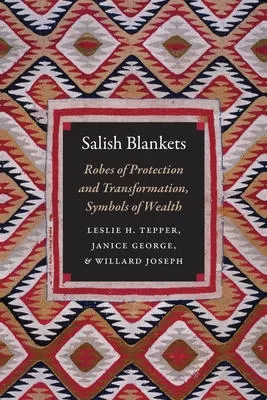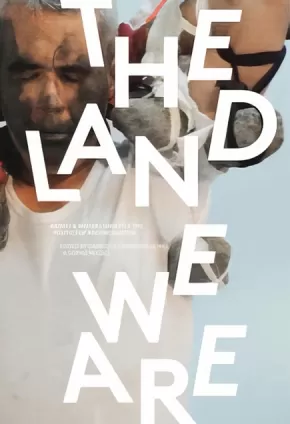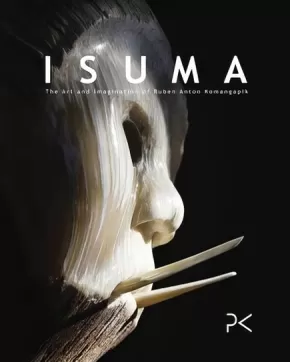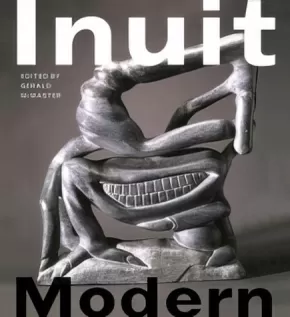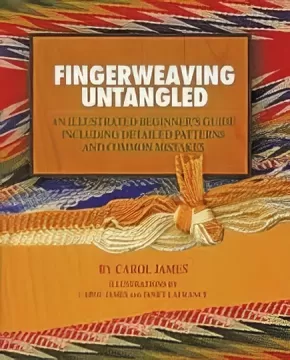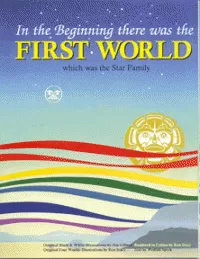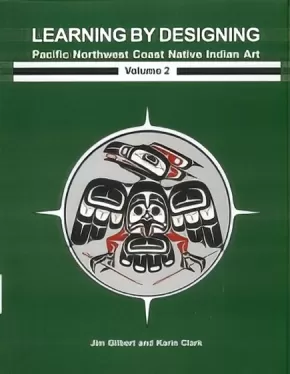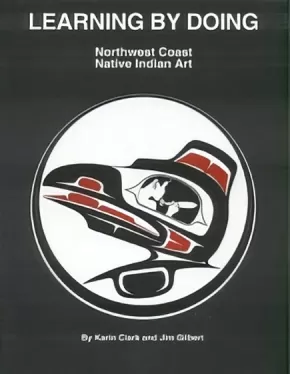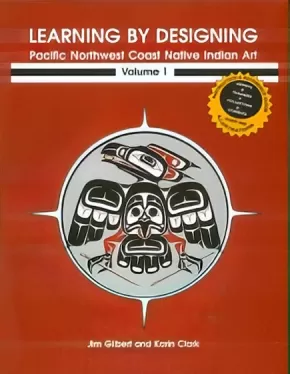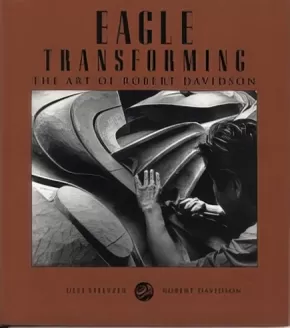
Design
31
-
41
of
41 Results;
Sort By
Go To
of 3
Salish Blankets: Robes of Protection and Transformation, Symbols of Wealth
$60.95
Format:
Paperback
Text Content Territories:
Indigenous Canadian; First Nations; Salish; Coast Salish; Squamish;
Grade Levels: University/College;
ISBN / Barcode: 9780803296923
Synopsis:
Synopsis:
Salish Blankets presents a new perspective on Salish weaving through technical and anthropological lenses. Worn as ceremonial robes, the blankets are complex objects said to preexist in the supernatural realm and made manifest in the natural world through ancestral guidance. The blankets are protective garments that at times of great life changes—birth, marriage, death—offer emotional strength and mental focus. A blanket can help establish the owner’s standing in the community and demonstrate a weaver’s technical expertise and artistic vision. The object, the maker, the wearer, and the community are bound and transformed through the creation and use of the blanket.
Drawing on first-person accounts of Salish community members, object analysis, and earlier ethnographic sources, the authors offer a wide-ranging material culture study of Coast Salish lifeways. Salish Blankets explores the design, color/pigmentation, meaning, materials, and process of weaving and examines its historical and cultural contexts.
The Land We Are: Artists and Writers Unsettle the Politics of Reconciliation
$24.95
Editors:
Format:
Paperback
Text Content Territories:
Indigenous Canadian;
ISBN / Barcode: 9781894037631
Synopsis:
Synopsis:
The Land We Are is a stunning collection of writing and art that interrogates the current era of reconciliation in Canada. Using visual, poetic, and theoretical language, the contributors approach reconciliation as a problematic narrative about Indigenous-settler relations, but also as a site where conversations about a just future must occur. The result of a four-year collaboration between artists and scholars engaged in resurgence and decolonization, The Land We Are is a moving dialogue that blurs the boundaries between activism, research, and the arts.
The contributors to this book include leading artists and scholars engaged in questions of resurgence, restitution, and decolonization.
Contributors: Jordan Abel, Leah Decter, Jonathan Dewar, David Garneau, Ayumi Goto, Allison Hargreaves, Gabrielle L'Hirondelle Hill, Jaimie Isaac, David Jefferess, Layli Long Soldier, The New BC Indian Art and Welfare Society Collective, Sophie McCall, Peter Morin, Skeena Reece, Dylan Robinson, Sandra Semchuk, Adrian Stimson, Clement Yeh, and Keren Zaiontz.
Reviews
"This beautifully produced, richly illustrated volume not only offers readers a visual journey into the featured artistic installations and performance pieces, but through its creative use of text and graphic design is itself an artistic statement on reconciliation." --Winnipeg Free Press
Educator Information
Recommended for students in grades 11 and 12, as well as at a college/university level.
Additional Information
240 pages | 6.50" x 9.50"
Isuma: The Art and Imagination of Ruben Komangapik
$29.95
Artists:
Format:
Paperback
ISBN / Barcode: 9781926569185
Synopsis:
Synopsis:
Ruben Anton Komangapik is one of the Arctic's most gifted sculptors.
His work has been exhibited across Canada with pieces on permanent loan to the Museum of Nature and Culture in Montreal. In Isuma, Ruben's vibrant, provocative sculpture, and his artistic process, are brought to life by photographer Estelle Marcoux Komangapik's arresting images.
Part autobiography, part art object, this book will introduce Canadians to one of the Arctic's most talented young artists.
Inuit Modern: Masterworks from the Samuel and Esther Sarick Collection
$24.99
Artists:
Editors:
Format:
Paperback
Text Content Territories:
Indigenous Canadian; Inuit;
Grade Levels: 12; University/College;
ISBN / Barcode: 9781553657781
Synopsis:
Synopsis:
A gorgeous retrospective on the transformation of Inuit art in the 20th century, mirroring the vast and poignant cultural changes in the North.
In response to a rapidly changing Arctic environment, Inuit have had to cope with the transition from a traditional lifestyle to the disturbing realities of globalization and climate change. Inuit art in the latter half of the 20th century reflects the reciprocal stimulus of contact with Euro-Canadians and embodies the evolution of a modern Inuit aesthetic that springs from an ancient cultural context, creating an exciting new hybridized art form. Inuit Modern: Art from the Samuel and Esther Sarick Collection situates modern Inuit art within a larger framework that reinterprets the Canadian Arctic.
Essays by leading Canadian scholars in the field including Ingo Hessel, Robert McGhee, Christine Laloude, Heather Igloliorte, Dorothy Eber and Bernadette Driscoll Engelstad examine the social, political and cultural transformation through the dynamic lens of colonial influence and agency. Inuit Modern also features interviews with David Ruben Piqtoukun and Zacharias Kunuk.
Reviews
"The work of Inuit artists has continually evolved in response to the industrialized, bureaucratic culture encroaching from the south. Inuit Modern, an opulent new coffee-table book, displays the astonishing results. The 175 pieces beautifully reproduced here span the last century." — Georgia Straight
"This book is full of treasures from one of the world's most comprehensive collections of Inuit art. With more than 175 works by Inuit artists, the reader is taken on a journey of the Inuit aesthetic as it evolves from its from traditional roots to a more contemporary and globalized art form." — Globe & Mail Top 100 for 2010
Additional Information
256 pages | 10.00" x 11.10"
Fingerweaving Untangled (3 in stock) - ON SALE!
$19.50 $24.95
Format:
Paperback
ISBN / Barcode: 9780978469504
Synopsis:
Synopsis:
This publication is a welcome addition to the literature on the ancient craft of fingerweaving. Carol James, an accomplished Winnipeg weaver and teacher, has dedicated over 20 years to the art. Her knowledge and sash reproductions are based on the detailed study of historical artifacts and are housed in various heritage institutions such as the Manitoba Museum and the Musee de Saint-Boniface.
Fingerweaving Basics
$33.95
Format:
Paperback
Text Content Territories:
Indigenous American; Native American;
ISBN / Barcode: 9781929572083
Synopsis:
Synopsis:
Fingerweaving has been practiced by Native Americans for centuries. It requires no sophisticated loom, only the nimble hands of the weaver. Each technique is presented in detail. The instructions are simple and clearly written, and each step is illustrated with color drawings that make the different threads easy to identify. Includes a color photo of each finished weaving. The approach used here makes this craft much more accessible to amateurs who may have wanted to try it but may have been turned off by the complexity of other books on the subject. Several variations are given for chevron stitch, lightning pattern, arrowhead pattern, bead accents, and fringe.
In the Beginning, There was the First World
$10.00
Format:
Paperback
Text Content Territories:
Indigenous American; Indigenous Canadian;
ISBN / Barcode: 9780969297956
Synopsis:
Synopsis:
This 16-page booklet has a beautifully illustrated Pacific Northwest Coast creation story and 20 designs from the four major Indigenous art style areas comparing the differences and similarities.
Learning By Designing Vol. 2: Pacific Northwest Coast Native Indian Art
$32.95
Format:
Paperback
Text Content Territories:
Indigenous American; Indigenous Canadian;
ISBN / Barcode: 9780969297949
Synopsis:
Synopsis:
This companion manual to Volume 1 puts First Nations art into deeper cultural context, providing Native Indian philosophy, knowledge and skills foundation, code of ethics, and interviews with a contemporary First Nations family, as well as some aspects of historical context and a description of the Potlatch. A full colour, 16-page creation story with 20 designs is included.
Additional topics include: contemporary design evolution with 50 examples, 20 designs to draw and paint, and a Quick Reference Chart containing over 100 designs.
Learning By Doing: Northwest Coast Native Indian Art
$24.95
Format:
Paperback
Text Content Territories:
Indigenous American; Indigenous Canadian;
ISBN / Barcode: 9780969297918
Synopsis:
Synopsis:
This book contains step-by-step instructions and illustrations on the basics of drawing, designing, painting and carving in the Pacific Northwest Coast Native Indian art style.
Learning by Designing Vol. 1: Pacific Northwest Coast Native Indian Art
$32.95
Format:
Paperback
Text Content Territories:
Indigenous American; Indigenous Canadian;
ISBN / Barcode: 9780969297932
Synopsis:
Synopsis:
This reference and instructional manual contains a detailed thoroughly analysed, well-supported comparisons of the four Pacific Northwest First Nations art styles. There are 800 clear, detailed illustrations accompanied by straightforward copy. Topics include design formalise, ovoids, U shapes, S shapes, heads, body parts, and design formation, as well as a step-by-step "How to Draw" section.
This reference and instructional manual contains a detailed, thoroughly analyzed, well-supported comparison of the four Pacific Northwest First Nations art styles. There are 800 clear, detailed illustrations accompanied by straightforward copy. Topics include design formline, ovoids, U shapes, S shapes, heads, body parts, and design formation, as well as a step-by-step "How to Draw" section.
Eagle Transforming: The Art of Robert Davidson (6 in Stock) - ON SALE
$33.75 $45.00
Artists:
Format:
Hardcover
Text Content Territories:
Indigenous Canadian; First Nations; Haida;
Grade Levels: University/College;
ISBN / Barcode: 9780295973715
Synopsis:
Synopsis:
Ulli Steltzer, a distinguished photographer, takes the reader into the carving shed and studio to see Robert Davidson as he creates both monumental poles and intricately detailed powerful masks. More than 100 of her black-and-white photographs, reproduced in duotone, record both the evolution of Davidson and his art, from the early days up to the present, a span of 25 years. In the accompanying text and captions, Robert Davidson writes movingly about growing up Haida and his development as an artist, describes the creative and practical process of carving poles and masks, and discusses the place of art in Haida culture.
An introduction by Aldona Jonaitis assesses Robert Davidson's place in the world of art. Robert Davidson has produced an internationally acclaimed body of art, in particular a number of large totem poles and masks in collections in Canada and the United States, including the Southwest Museum in Los Angeles, the National Gallery of Canada, the Canadian Museum of Civilization, and the Vancouver Art Gallery.
Sort By
Go To
of 3

